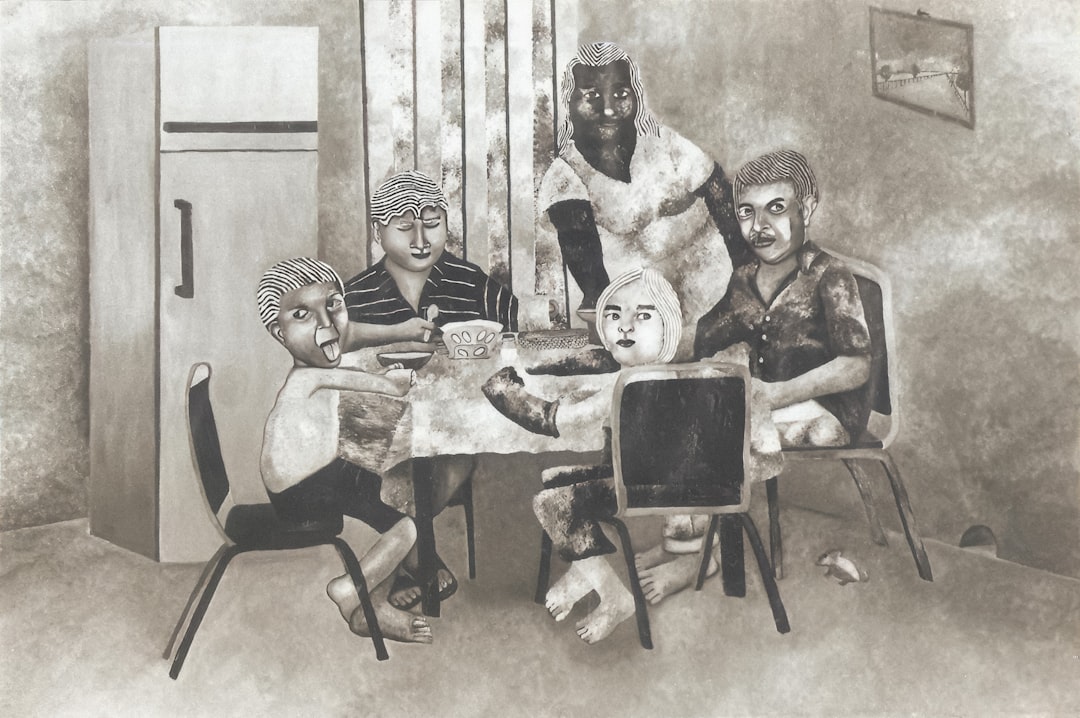The capture of Saddam Hussein on December 13, 2003, marked a pivotal moment in the history of Iraq and the broader Middle East. After years of evading coalition forces, the former Iraqi president was found hiding in a small underground hideout near his hometown of Tikrit.
The images of Hussein’s disheveled appearance, captured by U.S. troops, became iconic, symbolizing the fall of a dictator who had long instilled fear in his people. The implications of Hussein’s capture were profound.
It was seen as a turning point in the Iraq War, providing a sense of closure for many who had suffered under his oppressive rule. The moment was celebrated by coalition forces and Iraqi citizens alike, who viewed it as a step toward liberation and the establishment of a new democratic government. However, it also raised questions about the future of Iraq and the challenges that lay ahead in rebuilding a nation torn apart by years of conflict and tyranny.
Key Takeaways
- The capture of Saddam Hussein marked a historic moment in the Iraq War, signaling a major victory for the United States and coalition forces.
- The hunt for Saddam Hussein involved a timeline of events spanning several months, culminating in his capture in December 2003.
- Saddam Hussein’s capture had a significant impact on the war in Iraq, leading to a shift in power dynamics and a turning point in the conflict.
- From power to captivity, Saddam Hussein’s legacy underwent a dramatic transformation following his capture by coalition forces.
- The international reaction to Saddam Hussein’s capture was mixed, with some countries celebrating the event while others expressed concerns about the future of Iraq.
The Hunt for Saddam Hussein: A Timeline of Events
The hunt for Saddam Hussein began shortly after the U.S.-led invasion of Iraq in March 2003. Coalition forces quickly toppled his regime, but Hussein managed to evade capture, disappearing from the public eye. The timeline of events that followed was marked by intense military operations and intelligence efforts aimed at locating the former dictator.
In April 2003, U.S. forces captured Baghdad, yet Hussein remained at large, prompting a massive manhunt that spanned several months. As the months turned into years, the search for Hussein became increasingly complex.
The U.S. military employed various strategies, including aerial surveillance and ground operations, to track down leads on his whereabouts. Despite numerous reported sightings and tips from informants, Hussein continued to elude capture.
It wasn’t until late 2003 that intelligence finally led to his discovery in a rural area near Tikrit. The operation to capture him involved meticulous planning and coordination among various military units, culminating in a successful raid that would change the course of Iraq’s future.
The Impact of Saddam Hussein’s Capture on the War in Iraq

Saddam Hussein’s capture had immediate and far-reaching consequences for the war in Iraq. In the short term, it provided a morale boost to coalition forces and signaled a potential turning point in the conflict. The U.S. government heralded the event as a significant achievement in its mission to dismantle the remnants of Hussein’s regime and establish stability in Iraq. However, while some hoped that his capture would lead to a swift resolution of the conflict, the reality proved to be more complicated. In the aftermath of Hussein’s capture, Iraq experienced a surge in violence as insurgent groups sought to fill the power vacuum left by his absence. Sectarian tensions escalated, leading to widespread chaos and instability. The initial optimism surrounding Hussein’s capture soon gave way to a grim reality as coalition forces faced increasing resistance from various factions within Iraq. The challenges of nation-building became evident, highlighting the complexities of establishing a democratic government in a country with deep-rooted divisions.
Saddam Hussein’s Legacy: From Power to Captivity
| Legacy Aspect | Details |
|---|---|
| Political Influence | Dictatorial rule, suppression of dissent, and human rights abuses |
| Regional Impact | Wars with Iran and Kuwait, destabilization of the Middle East |
| Economic Policies | Investment in infrastructure, but also corruption and economic mismanagement |
| International Relations | Isolation and conflict with Western powers |
| End of Rule | Capture, trial, and execution |
Saddam Hussein’s legacy is one marked by brutality and oppression, but it is also one that reflects the complexities of power dynamics in the Middle East. During his reign, he was known for his ruthless tactics, including widespread human rights abuses, suppression of dissent, and aggressive military campaigns against neighboring countries. His leadership style fostered an atmosphere of fear and loyalty among his inner circle while alienating vast segments of the Iraqi population.
Following his capture, Hussein’s legacy took on a new dimension as he transitioned from a feared dictator to a prisoner facing trial for crimes against humanity. His time in captivity allowed for a reevaluation of his impact on Iraq and the region as a whole. While some viewed him as a symbol of resistance against foreign intervention, others saw him as a cautionary tale of unchecked power and its consequences.
The complexities surrounding his legacy continue to shape discussions about governance, justice, and reconciliation in post-war Iraq.
The International Reaction to Saddam Hussein’s Capture
The international reaction to Saddam Hussein’s capture was varied and complex, reflecting differing perspectives on the Iraq War and its implications for global politics. Many countries expressed support for the U.S.-led coalition’s efforts to bring Hussein to justice, viewing his capture as a necessary step toward stabilizing Iraq and promoting democracy in the region.
Conversely, there were also significant criticisms regarding the manner in which the war was conducted and the subsequent occupation of Iraq. Some nations questioned the legitimacy of the invasion and expressed concerns about the long-term consequences for regional stability. The capture of Hussein did little to quell these debates; instead, it intensified discussions about sovereignty, interventionism, and the responsibilities of occupying powers in post-conflict scenarios.
The Trial and Execution of Saddam Hussein

Saddam Hussein’s trial began on October 19, 2005, and quickly became one of the most high-profile legal proceedings in modern history. Charged with crimes against humanity for his role in the 1982 massacre of Shiite Muslims in Dujail, Hussein’s trial was marked by dramatic moments and contentious exchanges between him and the judges. Throughout the proceedings, he maintained his defiance, often using the courtroom as a platform to voice his political beliefs and challenge the legitimacy of the trial itself.
On November 5, 2006, after months of deliberation, Hussein was found guilty and sentenced to death by hanging. His execution on December 30, 2006, was met with mixed reactions both domestically and internationally. While many Iraqis viewed it as a form of justice for the atrocities committed during his regime, others criticized it as an act that could further inflame sectarian tensions within Iraq.
The trial and execution raised important questions about accountability, justice, and reconciliation in post-Saddam Iraq.
The Aftermath of Saddam Hussein’s Capture: Shifting Power Dynamics in Iraq
The aftermath of Saddam Hussein’s capture brought about significant shifts in power dynamics within Iraq. With Hussein removed from power, various factions began vying for control in a landscape marked by uncertainty and instability. The power vacuum left by his absence led to increased competition among political groups, often along sectarian lines.
This struggle for dominance contributed to escalating violence and civil unrest as different communities sought to assert their influence. The transitional government faced immense challenges in establishing legitimacy and fostering national unity amid growing sectarian divides. Efforts to create an inclusive political framework were often undermined by mistrust among various groups, leading to further fragmentation within Iraqi society.
As violence surged and insurgent groups gained traction, it became clear that Hussein’s capture had not resolved the underlying issues plaguing Iraq but rather exacerbated them.
The Psychological Impact of Saddam Hussein’s Capture on the Iraqi People
The psychological impact of Saddam Hussein’s capture on the Iraqi people was profound and multifaceted. For many who had lived under his oppressive regime, his downfall represented a long-awaited liberation from fear and repression. The images of his capture sparked hope among some citizens that they could finally begin to rebuild their lives free from tyranny.
However, this sense of liberation was often tempered by the harsh realities of ongoing violence and instability. Conversely, for others who had supported or benefited from Hussein’s regime, his capture signified a loss of power and influence. The subsequent chaos that engulfed Iraq left many feeling disillusioned and anxious about their future.
The psychological scars left by years of conflict were deepened by the uncertainty that followed Hussein’s removal from power. As Iraqis grappled with their collective trauma, it became evident that healing would require not only political solutions but also efforts to address the emotional toll inflicted by decades of violence.
The Role of Intelligence and Military Operations in Capturing Saddam Hussein
The successful capture of Saddam Hussein was largely attributed to a combination of intelligence gathering and military operations conducted by coalition forces. A network of informants played a crucial role in providing actionable intelligence that ultimately led to his discovery in December 2003. The U.S. military employed advanced surveillance techniques alongside traditional ground reconnaissance methods to track down leads on Hussein’s whereabouts. The operation itself involved meticulous planning and coordination among various military units tasked with executing the raid on his hideout. Special Forces teams were deployed to ensure that the operation was swift and effective while minimizing collateral damage. This successful collaboration between intelligence agencies and military personnel underscored the importance of comprehensive strategies in modern warfare—highlighting how critical information can shape outcomes on the battlefield.
Lessons Learned from the Capture of Saddam Hussein
The capture of Saddam Hussein provided several key lessons for military strategists and policymakers regarding counterinsurgency operations and post-conflict reconstruction efforts. One significant takeaway was the importance of understanding local dynamics and building relationships with communities affected by conflict. The complexities surrounding sectarian divisions within Iraq highlighted that military success alone would not suffice; political solutions were essential for long-term stability.
Additionally, the challenges faced during post-Hussein Iraq underscored the need for comprehensive planning when transitioning from military operations to nation-building efforts. The failure to adequately address governance issues contributed to ongoing violence and instability after his capture—demonstrating that effective leadership structures must be established alongside military objectives if lasting peace is to be achieved.
Saddam Hussein’s Capture: A Symbolic Victory for the United States and Coalition Forces
Saddam Hussein’s capture served as a symbolic victory for the United States and coalition forces engaged in Operation Iraqi Freedom. It represented not only a tangible achievement in their mission but also an opportunity to showcase their commitment to promoting democracy and human rights in Iraq. For many Americans, this moment was framed as a decisive blow against tyranny—a narrative that resonated strongly with those who supported military intervention.
However, while Hussein’s capture was celebrated as a victory at home, it also raised questions about what constituted success in Iraq beyond simply removing one individual from power. As violence persisted and sectarian tensions escalated following his downfall, it became clear that achieving lasting peace would require more than just symbolic victories; it necessitated sustained efforts toward reconciliation, governance reform, and addressing underlying grievances within Iraqi society. In conclusion, Saddam Hussein’s capture was not merely an event marked by military triumph; it encapsulated complex narratives surrounding power dynamics, justice, and healing within Iraq—a nation grappling with its past while striving toward an uncertain future.
In December 2003, the world witnessed a significant turning point in the Iraq War with the capture of Saddam Hussein, the former President of Iraq, by U.S. forces. This event marked a pivotal moment in the efforts to stabilize the region and bring justice to those affected by his regime. For more insights into the historical context and implications of Saddam Hussein’s capture, you can explore a related article on this topic by visiting Hey Did You Know This. This resource provides a deeper understanding of the events leading up to and following his capture, offering a comprehensive look at this critical moment in history.
WATCH NOW! How the US Hunted and Captured Saddam Hussein: The Untold Story of Operation Red Dawn
FAQs
1. When was Saddam Hussein captured?
Saddam Hussein was captured on December 13, 2003.
2. Where was Saddam Hussein captured?
Saddam Hussein was captured in a small underground hideout near his hometown of Tikrit, Iraq.
3. Who captured Saddam Hussein?
Saddam Hussein was captured by a joint operation involving U.S. military forces and the Iraqi police.
4. What was the significance of Saddam Hussein’s capture?
The capture of Saddam Hussein was a significant event in the Iraq War, as it marked the end of his regime and was seen as a major victory for the coalition forces.
5. What happened to Saddam Hussein after his capture?
Saddam Hussein was eventually tried and convicted by an Iraqi court for crimes against humanity, and he was executed by hanging on December 30, 2006.
